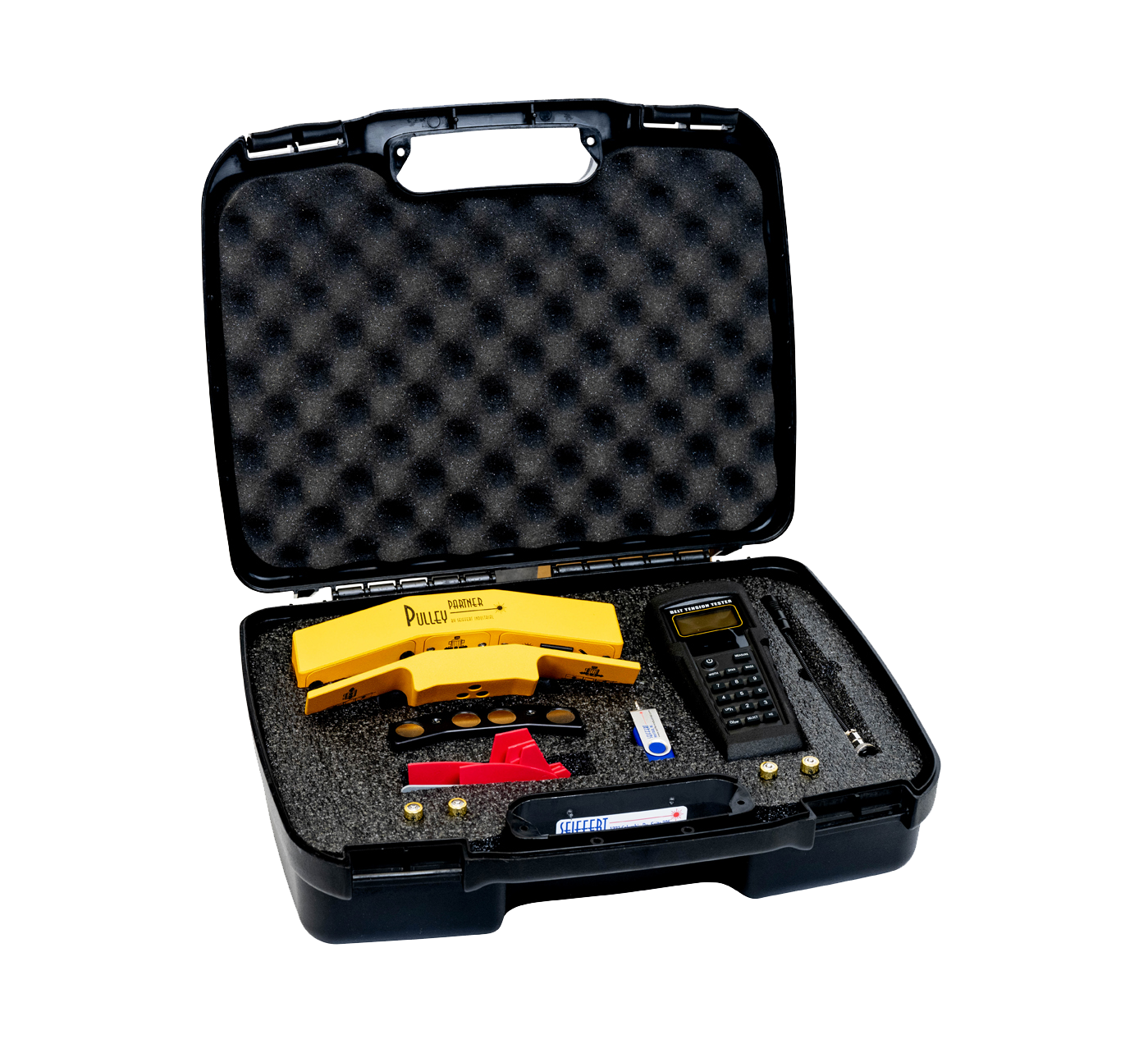
Countless industrial businesses that use machine belts have benefited greatly from using a Sonic Belt Tensioning Meter. To paraphrase, a Sonic Belt Tensioning Meter is used to make sure belts are working efficiently and have the correct belt tension. They provide the answers you need to determine whether or not the tension of the machine’s belts needs to be adjusted.
Not having the right belt tension can cause all sorts of serious issues, and cause machines to work inefficiently. Inefficient machines hurt production and the company’s bottom line, but thankfully a Sonic Belt Tension Meter will measure the vibration frequency of synchronous and V-belt drives to provide you with accurate information you need to ensure your machine is using optimal tension.
Tips for Using a Sonic Belt Tensioning Meter
- To obtain consistent readers, we recommend measuring at least three times to weed out any variables that may provide you with an inaccurate finding. Also, watch out for wind, is it could have an unwanted effect on the reading.
- Other variables to be cognizant of include belt and shaft irregularities, which can cause sprockets and sheaves to rotate and have an effect on the belt tension reading.
- Consider the length of your belt; in timing belts, use 20 times the length of the pitch and with V-belts, use spans that are at least 30 times the top width.
The Sonic Belt Tensioning Meter is Easy to Use
Fortunately, the Sonic Belt Tensioning Meter is extremely user friendly and is easy to use. It’s really just a one person job to get an accurate reading on synchronous and V-belt drives. All you’ll have to do is manually enter the belt’s mass constant, belt and span length, then hold the sensor above the belt, while lightly strumming to start the vibration process. After that, you just have hit measure to obtain the frequency data you seek.
For more information about the benefits of using a Sonic Belt Tensioning Meter on your machines belts, contact us at your convenience.

